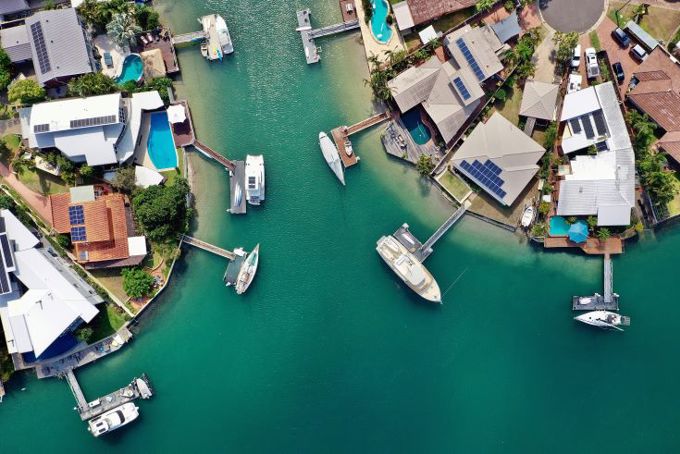
Waterfront Access Rights: Virginia Court Considers Easement
Background of The Garner v. Joseph Case
This past December, just before Christmas, the Virginia Supreme Court decided another pier case. This waterfront access rights issue involved three homeowners in Newport News, two of them with waterfront homes on Deep Creek, which is a tributary of the James River, and a third homeowner who was landlocked but had an easement providing access to Deep Creek. The landlocked owner used the easement to build a pier. A dry detail regarding legal procedure was the main question before the court, but there were plenty of other things in the opinion that directly affect the waterfront property owner. Follow this link if you would like to read the official opinion of the court.
How to Get Waterfront Access Rights Without Paying the High Cost of the Waterfront Lot
Clients with a landlocked property, or considering the purchase of a landlocked property, ask us from time-to-time whether an easement across a waterfront lot will allow them to build a pier. So long as the easement has the right language in it, we tell them “yes”, because we are familiar with the 1998 Virginia Supreme Court case precedent that creates an ability for the landlocked person to get waterfront access rights without having to pay the extra 25% to 45% that is needed to buy the waterfront lot. We have documented how waterfront lots command a premium price in our blog.
We were pleased to see that the court in Garner v. Joseph approvingly cited that 1998 case precedent, even quoting that part of the 1998 case that says that these types of easements carry with them the “riparian rights necessary to fulfill the intent of the” easement. To learn more about Virginia law on riparian rights, read this article in our blog.

Shutterstock: Mapman
The Shape and Location of The Riparian Area is Vital
The court in Garner v. Joseph also looked at the importance of the riparian area. The waterfront property owner (nearly always) has a riparian area on the water, in addition to his or her ownership of the upland property. The shoreline separates the riparian area from the upland area. Our webinar and our blog article explain how the property line moves when the shoreline changes at a waterfront property. To understand the size and shape of your riparian area, read this article in our blog.
The way that riparian water rights came into play in the Garner v. Joseph case is that one of the waterfront property owners demanded that the landlocked property owner remove the pier that he built in reliance on his easement rights. The waterfront property owner claimed that the pier encroached in the riparian area of the waterfront property owner. The court did not need to decide whether the pier was built in the riparian area of another because of the way that the court ruled on the dry detail regarding legal procedure. The pier gets to stay put for the time being and the waterfront property owner can make another at try at getting it removed if he wants to do so.
Our Waterfront Property Team Routinely Handles Pier Problems
It was a pier that created all the fuss in Garner v. Joseph. Owning a pier is so important to waterfront property owners because it expands their access to the water. This is the reason that we wrote an article that explains how to build a pier in Virginia. Still, though, there is something about building a pier that creates a backlash because, in many situations, the pier blocks another person’s view of the water, hinders navigation, or acts as a magnet for noisy activity that will disturb the tranquility of a quiet neighborhood. More than almost any other type of case, it is a problem with a pier that causes the majority of our clients to contact us. We handle pier cases at the Virginia Marine Resources Commission, the U.S. Army Corps of Engineers, and in court. Our team of waterfront property law attorneys successfully defended in court the rights of people who own boat slips in a community pier, as against a person in the community who wanted to take those boat slips away because he did not own a slip for himself.

Shutterstock: Zolnierek
Conclusion
Contact Jim Lang if you would like to see him publish more information on any topic related to waterfront property rights in the state of Virginia. Of course, you can always contact Jim for his advice and assistance in connection with needs specific to your particular situation.
